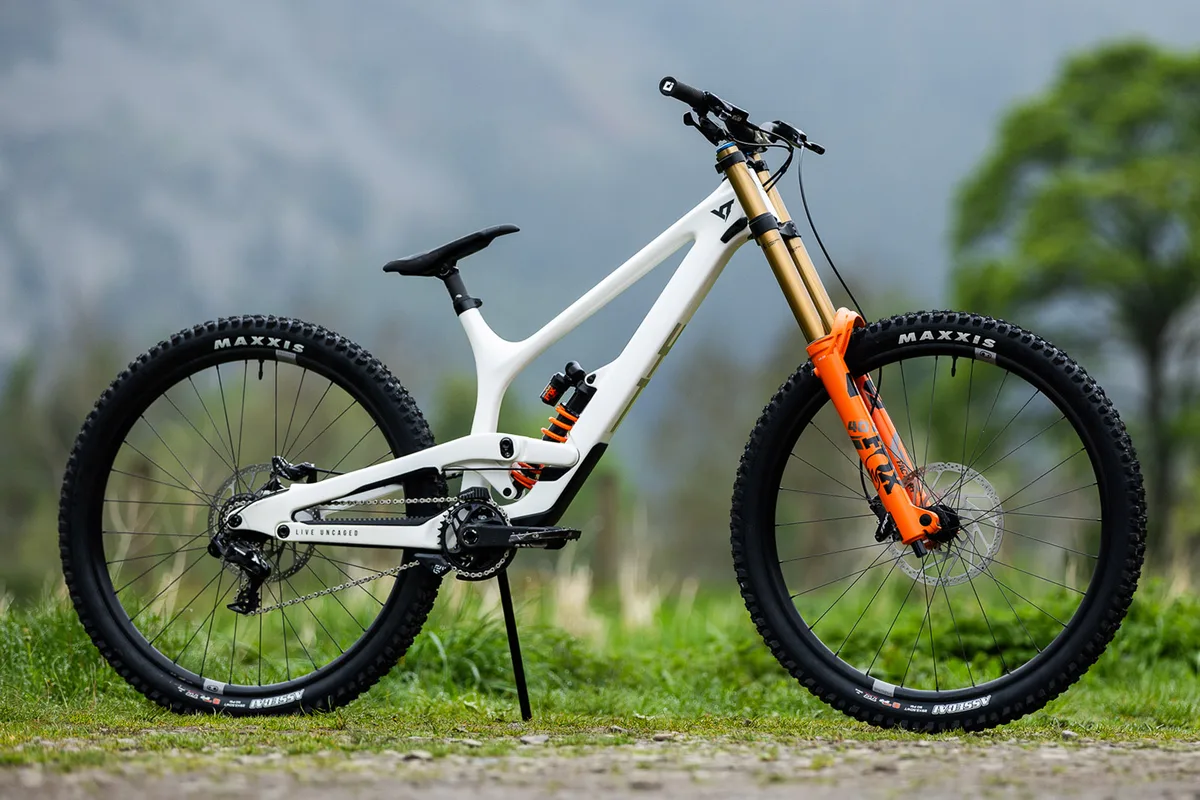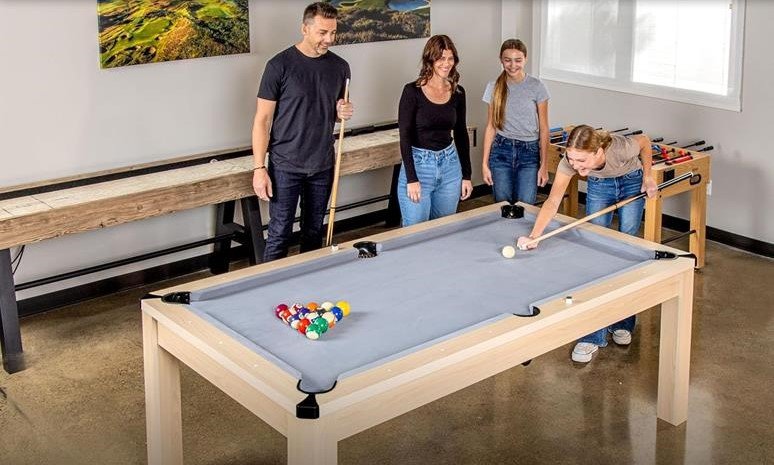Are you ready to find the best mountain bike brand that fits your style and needs? Choosing the right brand can make all the difference in your riding experience.
Whether you crave smooth trails or rugged climbs, the perfect bike waits for you. You’ll discover which brands stand out for quality, durability, and performance. Keep reading to uncover the top names that can take your mountain biking to the next level.
Your next adventure starts with the right bike—let’s find it together.

Top Mountain Bike Brands
Many brands make great mountain bikes. Choosing the right one depends on your needs. This guide covers some of the best brands.
Each brand offers unique features and bike types. Learn about their strengths to find the best fit.
Specialized
Specialized is known for innovation and quality. Their bikes suit beginners and experts alike. They focus on comfort and control.
Trek
Trek offers a wide range of mountain bikes. Their models include hardtail and full suspension bikes. They use reliable components for durability.
Giant
Giant is one of the largest bike makers worldwide. They provide value and performance. Their bikes are great for all trail types.
Cannondale
Cannondale stands out with its frame design and light weight. Their mountain bikes deliver speed and agility. Riders enjoy smooth rides on rough terrain.
Santa Cruz
Santa Cruz focuses on high-end mountain bikes. Their bikes are known for strength and performance. They offer many models for different riding styles.
| Brand | Key Feature | Best For |
| Specialized | Comfort and control | All levels |
| Trek | Durability | Wide range of trails |
| Giant | Value and performance | All trail types |
| Cannondale | Lightweight design | Speed and agility |
| Santa Cruz | Strength and high-end quality | Serious riders |

Key Features To Look For
Choosing the best mountain bike brand starts with knowing what features matter most. These features affect your riding experience and bike durability.
Focus on the frame material, suspension type, wheel size, braking system, and gear options. Each plays a vital role in performance.
Frame Material
The frame material impacts the bike’s weight and strength. Common materials include aluminum, carbon fiber, steel, and titanium.
- Aluminum is light and affordable
- Carbon fiber offers high strength with low weight
- Steel is strong and durable but heavier
- Titanium is light, strong, and long-lasting but costly
Suspension Type
Suspension helps absorb shocks from rough trails. Bikes have either hardtail or full suspension systems.
- Hardtail bikes have front suspension only
- Full suspension bikes have front and rear suspension
- Full suspension offers better control on rough terrain
- Hardtail bikes are lighter and easier to maintain
Wheel Size
Wheel size affects how the bike handles and rolls over obstacles. The main sizes are 26″, 27.5″, and 29″.
- 26″ wheels are nimble and good for tight trails
- 27.5″ wheels balance speed and control
- 29″ wheels roll over obstacles easily and keep speed
Braking System
The braking system must provide strong and reliable stopping power. Mountain bikes mainly use disc brakes or rim brakes.
- Disc brakes offer better performance in wet and muddy conditions
- Hydraulic disc brakes provide strong and smooth stopping power
- Mechanical disc brakes are easier to maintain
- Rim brakes are lighter but less effective in rough weather
Gear Options
Gears help you ride smoothly on different terrains. Look for bikes with a good range of gears for climbing and descending.
- More gears give better control on steep trails
- Single chainring setups are simpler and lighter
- Multiple chainrings offer a wider gear range
- Check for reliable shifters and smooth gear changes
Types Of Mountain Bikes
Mountain bikes come in many styles. Each type fits different terrains and riding goals.
Choosing the right mountain bike helps you ride better and enjoy your time outdoors.
Cross Country
Cross country bikes are light and fast. They work well on smooth trails and climbs.
Trail
Trail bikes are versatile and can handle many types of terrain. They offer a good balance of speed and control.
Enduro
Enduro bikes are built for rough trails and long rides. They have strong suspension and durable parts.
- Strong frame for rough trails
- Long travel suspension
- Good for downhill and uphill riding
- Heavier than cross country bikes
Downhill
Downhill bikes are made for steep and fast descents. They have heavy suspension and strong brakes.
| Feature | Downhill Bike |
| Suspension Travel | 200mm or more |
| Weight | Heavier, for stability |
| Brakes | Powerful hydraulic disc brakes |
| Frame | Reinforced and strong |
Fat Bikes
Fat bikes have very wide tires. They work well on snow, sand, and soft ground.
Fat bike tire widths:
- 3.8 inches and wider
- Provide extra grip and floatation
- Lower tire pressure for better traction
Price Ranges And Value
Choosing the best mountain bike brand depends on your budget and needs. Bikes come in different price ranges with various features. Understanding these can help you find the best value for your money.
This guide breaks down mountain bikes into entry-level, mid-range, and high-end categories. Each offers different benefits based on price and performance.
Entry-level Bikes
Entry-level mountain bikes are great for beginners. They cost less but still offer good quality for casual riding. These bikes usually have basic components and simple frames.
- Price range: $400 to $800
- Frames made of aluminum or steel
- Front suspension forks for basic shock absorption
- Good for light trails and city riding
- Lower maintenance costs
Mid-range Bikes
Mid-range bikes offer better components and durability. They suit riders who want more performance and plan to ride often on rough trails. These bikes balance price and quality well.
| Feature | Mid-Range Bikes |
| Price | $800 to $1,500 |
| Frame Material | Lightweight aluminum or carbon fiber |
| Suspension | Full or front suspension with better travel |
| Brakes | Hydraulic disc brakes |
| Gears | Wide range for varied terrain |
High-end Bikes
High-end mountain bikes provide top performance and advanced technology. These bikes suit serious riders and competitors. They offer lightweight frames and premium parts.
- Price range: $1,500 to $10,000+
- Carbon fiber frames for the lightest weight
- Advanced full suspension systems
- Electronic shifting and high-quality brakes
- Designed for aggressive and technical riding
Customer Reviews And Ratings
Choosing the best mountain bike brand can be hard. Customer reviews and ratings help people decide.
Reviews show real experiences from riders. Ratings give a quick view of satisfaction levels.
Performance Feedback
Many riders share how well bikes perform on trails. They talk about speed, handling, and control.
Good brands get praise for smooth rides and easy gear shifts. Some reviews mention how bikes handle rough paths.
- Fast acceleration on climbs
- Stable on steep descents
- Responsive brakes for safety
Durability Reports
Customers often comment on how long bikes last. They note parts that wear out or stay strong.
Top brands get good marks for tough frames and reliable components. Some users report issues with certain parts after heavy use.
- Frames resist dents and scratches
- Wheels stay true after many rides
- Chains and gears last many months
Comfort And Fit
Riders share how comfortable bikes feel during long rides. Fit and seat design get much attention.
Brands with adjustable seats and handlebars get better ratings. Some reviews highlight pain-free rides and good body support.
- Seats cushion well on rough trails
- Handlebars fit different hand sizes
- Frames match rider height easily
Innovations In Mountain Bikes
Mountain bike brands keep improving their designs. They use new technology to help riders enjoy trails more. These changes make mountain bikes stronger, lighter, and easier to control.
Three key areas of innovation are electric mountain bikes, advanced suspension systems, and lightweight materials. Each area changes how riders experience the sport.
Electric Mountain Bikes
Electric mountain bikes have a motor to help riders pedal. This makes climbing hills easier and lets riders go farther. Many brands add smart controls for better power use.
- Motors that adjust power based on terrain
- Long-lasting batteries for longer rides
- Lightweight frames to balance weight
- Integrated displays to show speed and battery life
Advanced Suspension Systems
Suspension systems absorb shocks from rough trails. New designs use better materials and geometry. This improves comfort and control for riders on all types of terrain.
| Type | Feature | Benefit |
| Air Suspension | Adjustable pressure | Custom comfort |
| Hydraulic Suspension | Smooth damping | Better control |
| Linkage Suspension | Improved travel | Increased stability |
Lightweight Materials
Using lighter materials helps riders move faster and reduces fatigue. Brands use carbon fiber, aluminum, and titanium to cut weight while keeping strength.
- Carbon fiber for strong and light frames
- Aluminum alloys for affordable and durable bikes
- Titanium for corrosion resistance and long life
How To Choose The Right Brand
Picking the best mountain bike brand can be tricky. You want a bike that fits your needs and lasts long.
Knowing what to look for helps you make a good choice. Focus on your riding style, budget, and support.
Riding Style Considerations
Your riding style affects which brand suits you best. Some brands make bikes for rough trails, others for smooth paths.
Think about where and how you ride. This helps you find a bike built for your type of riding.
- Cross-country riders need lightweight and fast bikes
- Trail riders want strong and versatile bikes
- Downhill riders require durable and stable bikes
- Urban riders look for comfort and ease of use
Budget Constraints
Set a budget before choosing a brand. Mountain bikes come in many price ranges.
Some brands offer good quality at lower prices. Others charge more for advanced features.
- Decide how much you want to spend
- Check brands that fit your budget
- Look for bikes with the best value in your price range
- Remember, expensive does not always mean better for you
After-sales Support
Good after-sales support helps keep your bike in top shape. Some brands have better service than others.
Check if the brand offers easy repairs, parts, and customer help. This saves time and money later.
- Look for brands with local dealers or service centers
- Check if spare parts are easy to find
- See if the brand offers a warranty or repair services
- Read reviews about the brand’s customer support

Frequently Asked Questions
What Factors Determine The Best Mountain Bike Brand?
The best brand depends on bike quality, durability, innovation, and customer service. Rider needs and budget also matter.
Which Mountain Bike Brands Offer The Best Value?
Brands like Giant and Trek balance quality with affordability, offering reliable bikes without high prices.
Are Popular Mountain Bike Brands Good For Beginners?
Yes, brands like Specialized and Cannondale provide beginner-friendly models with easy handling and good support.
How Do Top Mountain Bike Brands Differ In Technology?
Leading brands invest in suspension, frame materials, and component upgrades to enhance performance and ride comfort.
Conclusion
Choosing the best mountain bike brand depends on personal needs. Consider budget, terrain, and features. Brands like Trek, Specialized, and Giant offer quality options. Each brand has unique strengths. Some focus on durability, others on speed. Test different models if possible.
Reading reviews helps too. Ask friends for their experiences. Trust your instincts. A good bike enhances outdoor adventures. Enjoy the ride!


